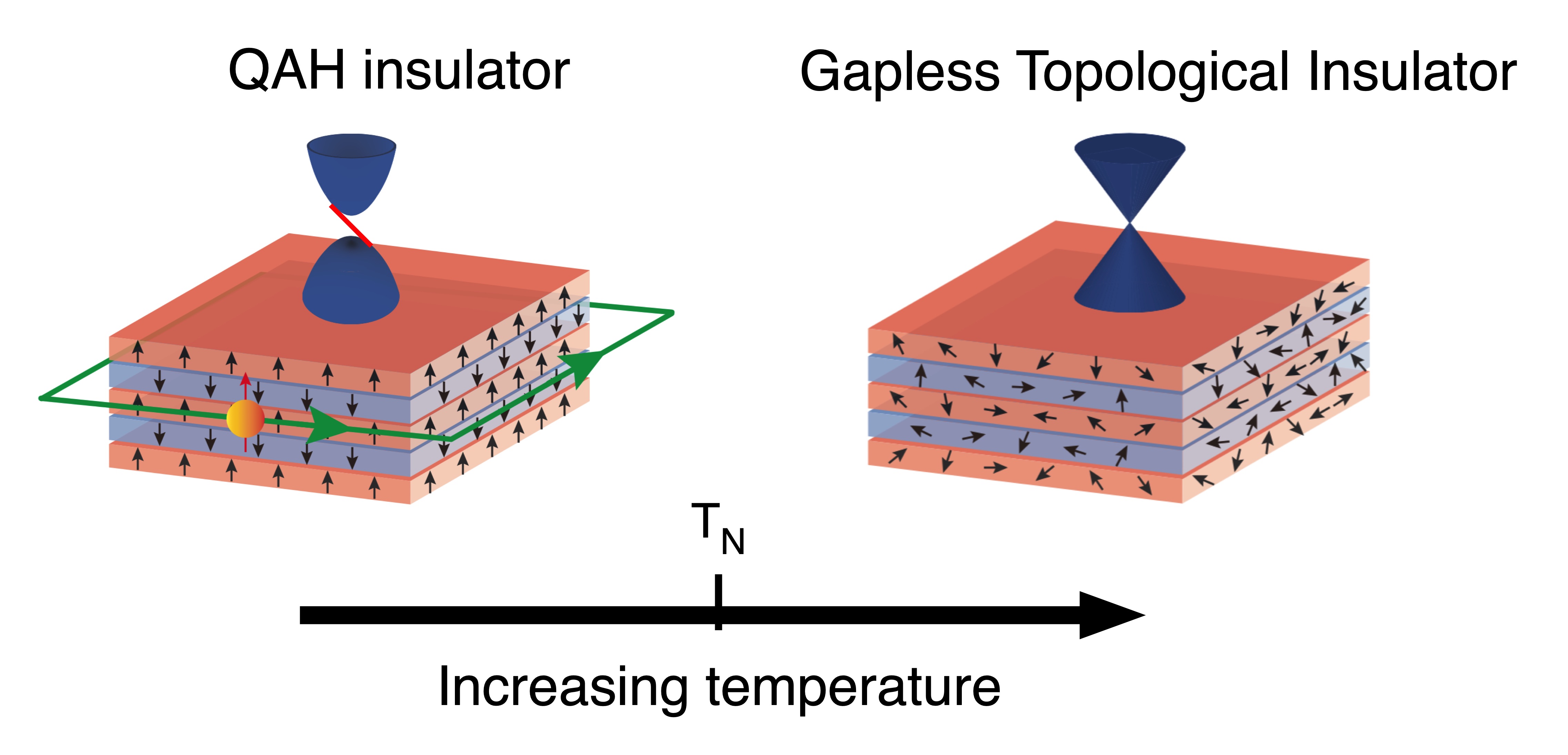Australian team find large band gap in magnetic topological insulator

The almost zero resistance along the 1D edges of a QAH insulator, make it promising for lossless transport applications and ultra-low energy devices
An intrinsic magnetic topological insulator MnBi2Te4 has been discovered with a large band gap, making it a promising material platform for fabricating ultra-low-energy electronics and observing exotic topological phenomena.
Hosting both magnetism and topology, ultra-thin (only several nanometers in thickness) MnBi2Te4was found to have a large band-gap in a Quantum Anomalous Hall (QAH) insulating state, where the material is metallic (ie, electrically conducting) along its one-dimensional edges, while electrically insulating in its interior. The almost zero resistance along the 1D edges of a QAH insulator, make it promising for lossless transport applications and ultra-low energy devices.
Previously, the path towards realising the QAH effect was to introduce dilute amounts of magnetic dopants into ultra-thin films of 3D topological insulators.
However, dilute magnetic doping results in a random-distribution of magnetic impurities, causing non-uniform doping and magnetisation. This greatly suppresses the temperature at which the QAH effect can be observed and limits possible future applications.
A simpler option is to use materials that host this electronic state of matter as an intrinsic property.
Recently, classes of atomically -thin crystals have emerged, similar to the famous graphene, that are intrinsic magnetic topological insulators (ie, possess both magnetism and topological protection).
These materials have the advantage of having less disorder and larger magnetic band-gaps, allowing robust magnetic topological phases operating at higher temperature (ie, closer to the ultimate aim of room-temperature operation).
The picture above shows the phase transition from QAH insulator phase (left) to paramagnetic gapless TI phase (right), when above the magnetic ordering temperature
“At FLEET’s labs at Monash University, we grew ultra-thin films of an intrinsic magnetic topological insulator MnBi2Te4 and investigated their electronic band structure,” explains lead author Chi Xuan Trang.
Magnetism introduced in topological-insulator materials breaks time-reversal symmetry in the material, resulting in opening a gap in the surface state of the topological insulator.
“Although we cannot directly observe the QAH effect using angle-resolved photoemission spectroscopy (ARPES), we can use this technique to probe the size of a band-gap opening on the surface of MnBi2Te4 and how it evolves with temperature.” says Trang, who is a Research Fellow at FLEET.
In an intrinsic magnetic topological insulator, such as MnBi2Te4, there is a critical magnetic ordering temperature where the material is predicted to undergo a topological phase transition from QAH insulator to a paramagnetic topological insulator.
“By using angle-resolved photoemission at different temperatures, we could measure the band gap in MnBi2Te4 opening and closing to confirm the topological phase transition and magnetic nature of the bandgap,” says Qile Li a FLEET PhD student and co-lead author on the study.
“The bandgaps of ultrathin film MBT can also change as a function of thickness, and we observed that a single layer MnBi2Te4 is a wide bandgap 2D ferromagnetic insulator. A single layer of MBT as a 2D ferromagnet could also be used in proximity magnetisation when combined in a heterostructure with a topological insulator.” says Qile Li.
“By combining our experimental observations with first-principles density functional theory (DFT) calculations, we can confirm the electronic structure and the gap size of layer-dependent MnBi2Te.” says FLEET AI and group leader . Mark Edmonds.
MnBi2Te has potential in a number of classical computing applications, such as in lossless transport and ultra-low energy devices. Furthermore, it could be coupled with a superconductor to give rise to chiral Majorana edge states, which are important for topological quantum computing device schemes.
FLEET researchers used angle-resolved photoemission spectroscopy (ARPES), and density functional theory (DFT) calculations to study the electronic state and band structure of MnBi2Te4.
'Crossover from 2D Ferromagnetic Insulator to Wide Band Gap Quantum Anomalous Hall Insulator in Ultrathin MnBi2Te4' was published in August 2021 in ACS Nano.


































